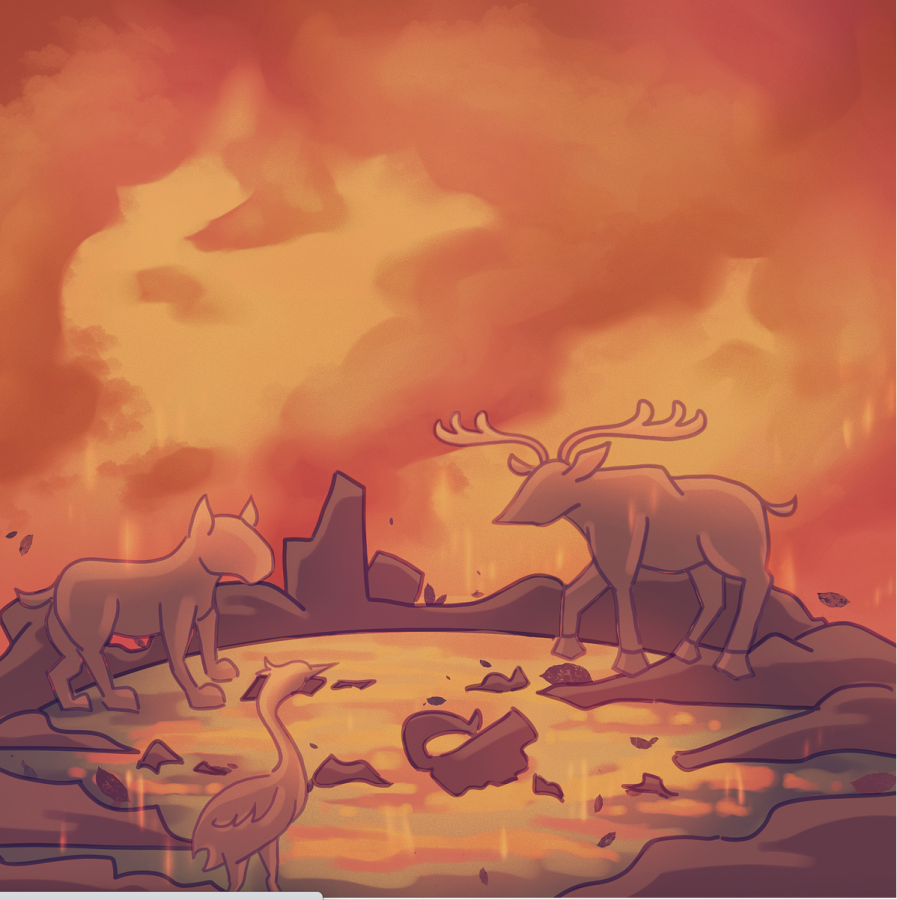While the world’s focus on the Russian invasion of Ukraine has often been told through the eyes of Ukrainian citizens, there is a silent victim: the Ukrainian environment. AP environmental science teacher Nicole Loomis said the invasion has taken a large toll.
Ukraine has a vast landscape that Loomis said is made of grassland and fleeting forests.
“They are located in the steppes of Asia, so that would be a grassland area,” Loomis said. “But they are also on the edge of Eastern Europe, which I know has a lot of deciduous forests. And north of them, they have a lot of boggy wetlands.”
In February of this year when Russian forces captured the Ukrainian city of Chernobyl, the troops released a large amount of radiation, according to Loomis.
“Certainly the area around Chernobyl (was affected),” Loomis said. “There’s evidence that they dug up into the ground… a very high radiation area that may have been some radiation released from their activities there.”
According to Eco Club president and junior Jade Minskoff, in any war scenario, like that of Chernobyl, war is detrimental to the environment and ecosystems.
“War definitely affects ecosystems in a drastic way, for example, military activities produce extensive amounts of greenhouse gasses,” Minskoff said. “These greenhouse gasses can be attributed to anthropogenic climate change.”
Anthropogenic climate change is climate change as a result of human activity, like war, which is not a new phenomenon.
According to Loomis, during the Iraq war in the 1990s, wetlands were set on fire, destroying the marsh environment.
“Iraq actually set fire to their wetlands because there’s a lot of oil in their wetlands –– They basically set the oil on fire, and it burned and burned and burned,” Loomis said. “That was devastating for the environment there.”
Similar to the destroying of Iranian wetlands, these pollutants used not only cause immediate damage to environments but leave ecosystems polluted, according to Minskoff.
“As well as overall pollution that war causes, weapons and discarded material left in environments that were ravaged by war can lead to the inability to have this land accessible for agricultural practices, with polluted soils and water sources from toxic materials and metals leftover,” Minskoff said.
In addition to negative environmental impacts from the usage of artillery and toxins, Loomis also said native animals are victims of war. On top of the damage to their habitat, Loomis said it is common for troops to poach and eat the animals.
“In some situations, you need food to feed your troops,” Loomis said. “So (troops) will definitely hunt the edible animals in the place they are fighting in.”
Not only are animals affected due to poaching, but they are also affected because their ecosystems are severely damaged.
“Conflict destroys animals’ natural habitats, introduces new threats which can be identified as firearms and landmines and displaces nearby wildlife,” Minskoff said. “There is a multitude of adverse effects that war has on ecosystems and many are irreversible, and sadly, many animals die in war zones as a result of military operations.”
The idea of reversing damage may be hard, especially because war leaves a large print on the environment and ecosystems in which war is fought in. However, there are possibilities for restoration. While Loomis acknowledges that restoration can be challenging and costly, it can be accomplished with determination.
“It’s the same thing as reversing any kind of damage. It could be war. It could be industry. It could be developments,” Loomis said. “For example, considering the marshes in Iraq, you would replant them and make sure they have the right tidal flow … you need the will and the money and the people to make it happen.”

